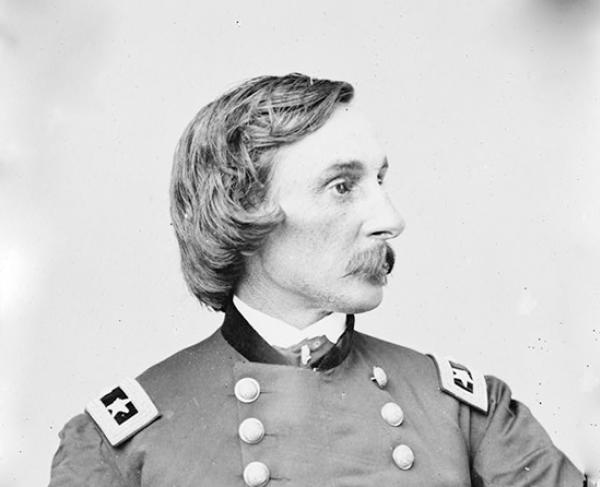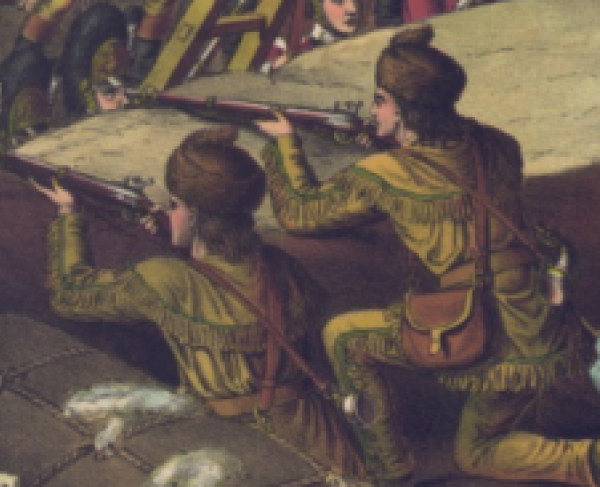Gouverneur K. Warren

Gouverneur Kemble Warren began his military career after graduating second in his class from the United States Military Academy in 1850. He was commissioned into the Corps of Topographical Engineers, and spent time working along the Mississippi River, as well as taking part in creating one of the first comprehensive maps of the United States west of the Mississippi River.
After the outbreak of the Civil War, on May 14, 1861, he was appointed lieutenant colonel of the 5th New York, and saw action at the Battle of Bethel Church (also known as Big Bethel) in Virginia on June 10. For his actions during the battle, he was promoted to colonel of the regiment in August of 1861. In 1862, he and his command took part in the Peninsula Campaign. He commanded his regiment during the Siege of Yorktown, and commanded a brigade of Sykes’ Division during the Seven Days Battles. He was wounded at the battle of Gaines’ Mill, and performed admirably at the Battle of Malvern Hill, holding off an attack of overwhelming Confederate forces. He commanded a brigade under Fitz John Porter at the Battle of Second Manassas, as well as during the Battle of Antietam. For his actions, he was promoted to brigadier general of volunteers on September 26, 1862. He continued to lead his brigade through the Battle of Fredericksburg, and then served as an engineer for General Joseph Hooker during the Battle of Chancellorsville. It was after this battle that Gouverneur Warren received his most fame.
On the second day of the Battle of Gettysburg, Gouverneur Warren realized the importance that a position known as Little Round Top would be during the battle, and sent Colonel Strong Vincent to hold the position just as Confederates began to attack. As a result of this action, the Union army was able to hold onto the key position, and went on to win the battle. He was promoted to major general on August 8, 1863 following the battle.
After Winfield Scott Hancock was wounded, Warren took control of the II Corps, and was noted for his actions during the Battle of Bristoe Station. During the Mine Run Campaign, Warren chose not to attack Lee’s army, avoiding a trap that would have cost many Union lives. Before the Overland Campaign, Warren was reassigned to take command of the V Corps. He led the V Corps through the Overland Campaign, during the Siege of Petersburg, and into the beginning stages of the Appomattox Campaign. At the Battle of Five Forks, Union General Philip Sheridan was greatly angered by what he perceived as Warren moving his Corps too slowly, and relieved him of command on the spot. Although he was reassigned to the defenses of Petersburg, Warren would never forget the incident.
After the war, he resigned his commission as a major general in protest to Sheridan’s actions, and returned to the Corps of Engineers. He spent the rest of his career attempting to exonerate his name. In 1879, a board of inquiry was finally called, and it was found that Sheridan was not justified in relieving Warren during the battle.


